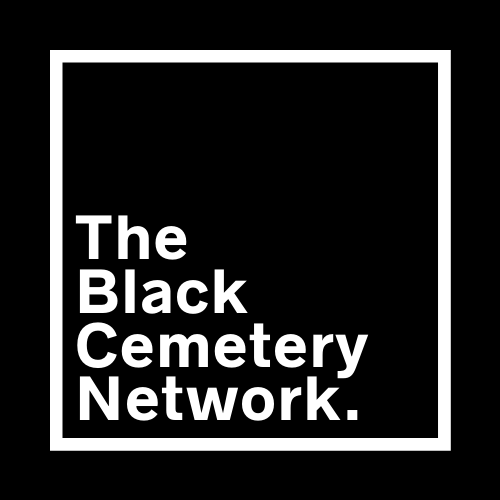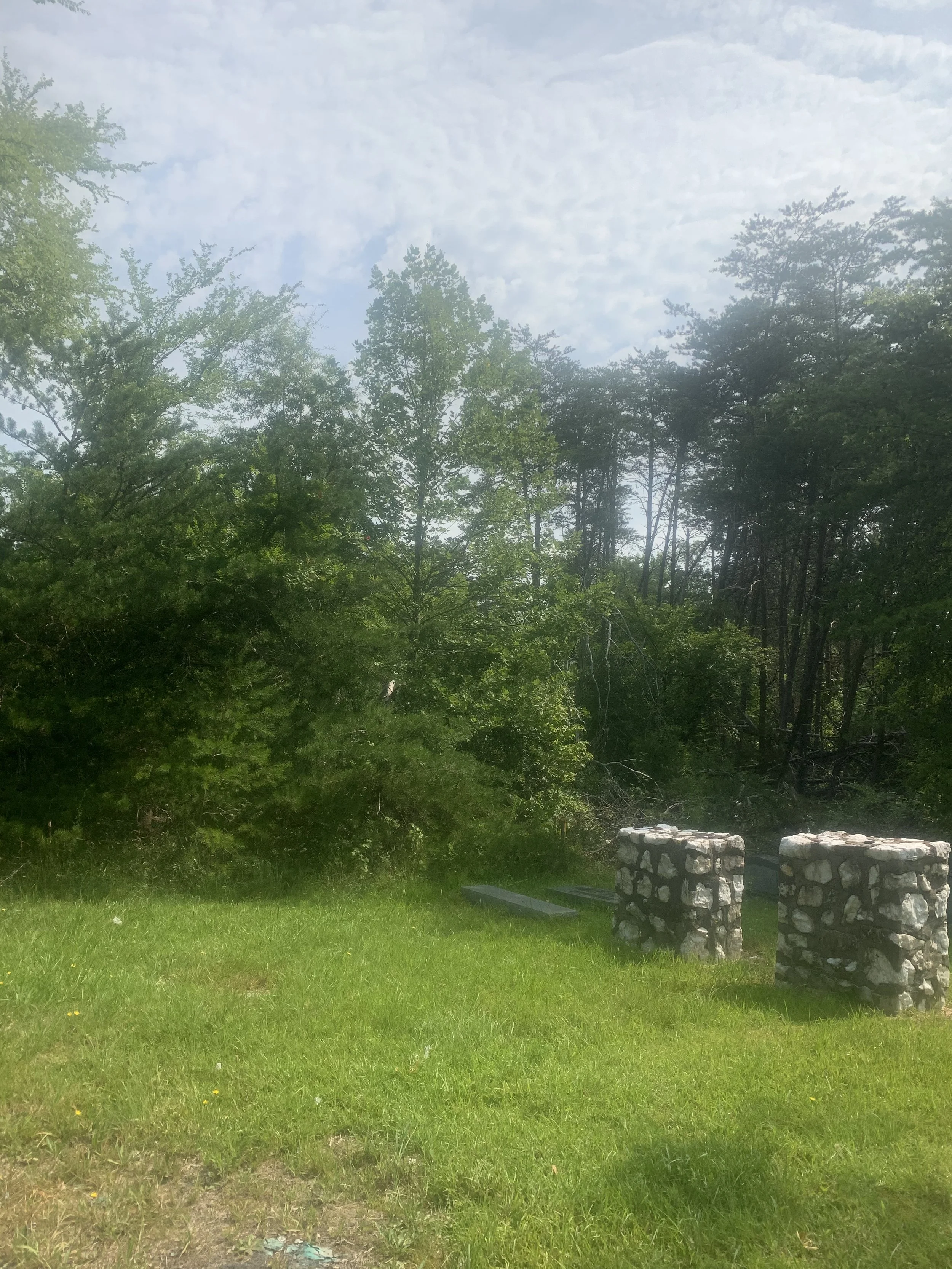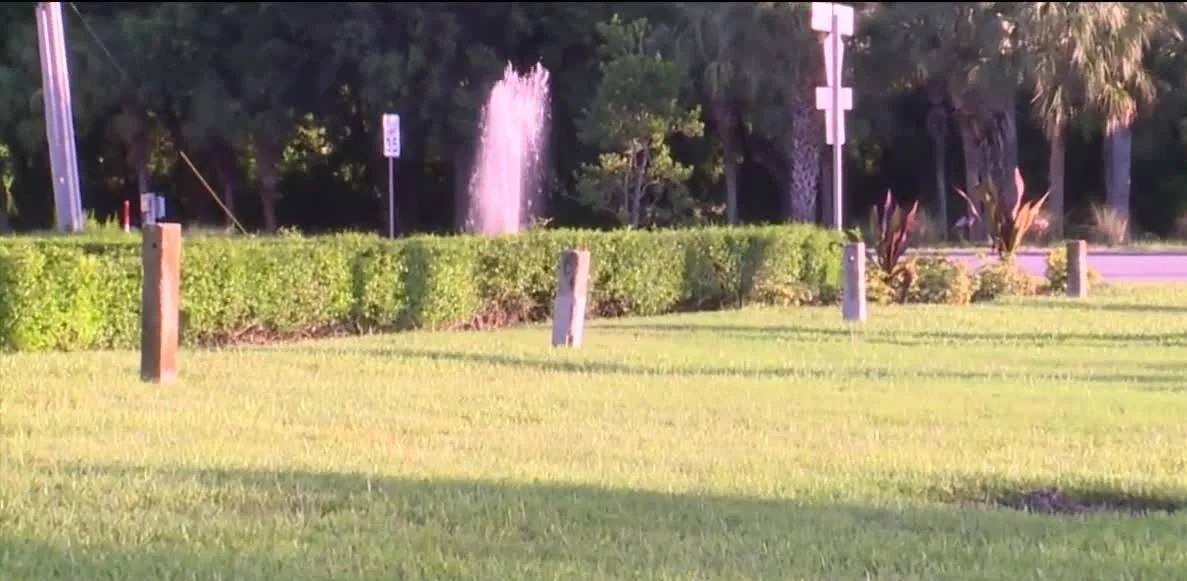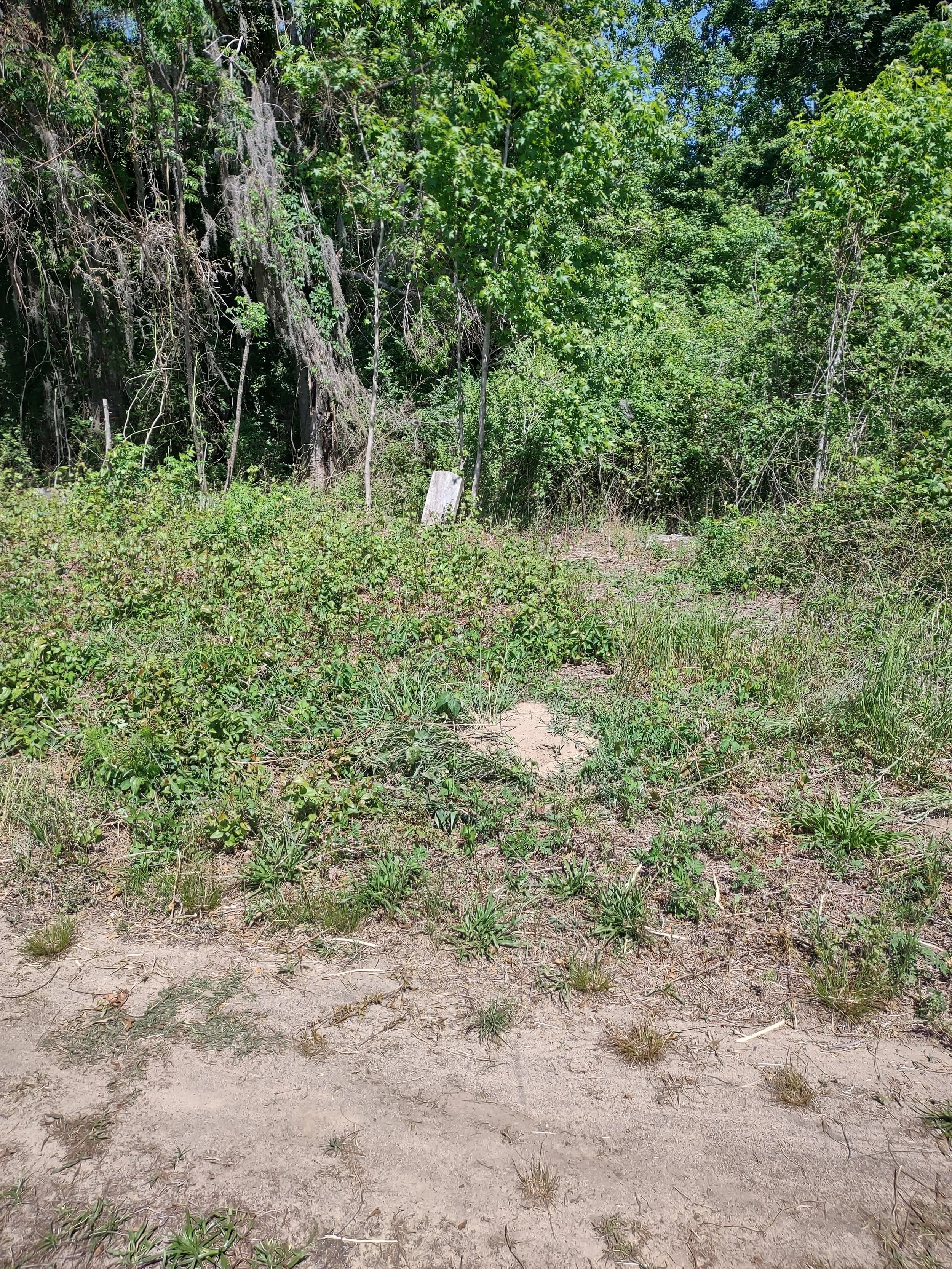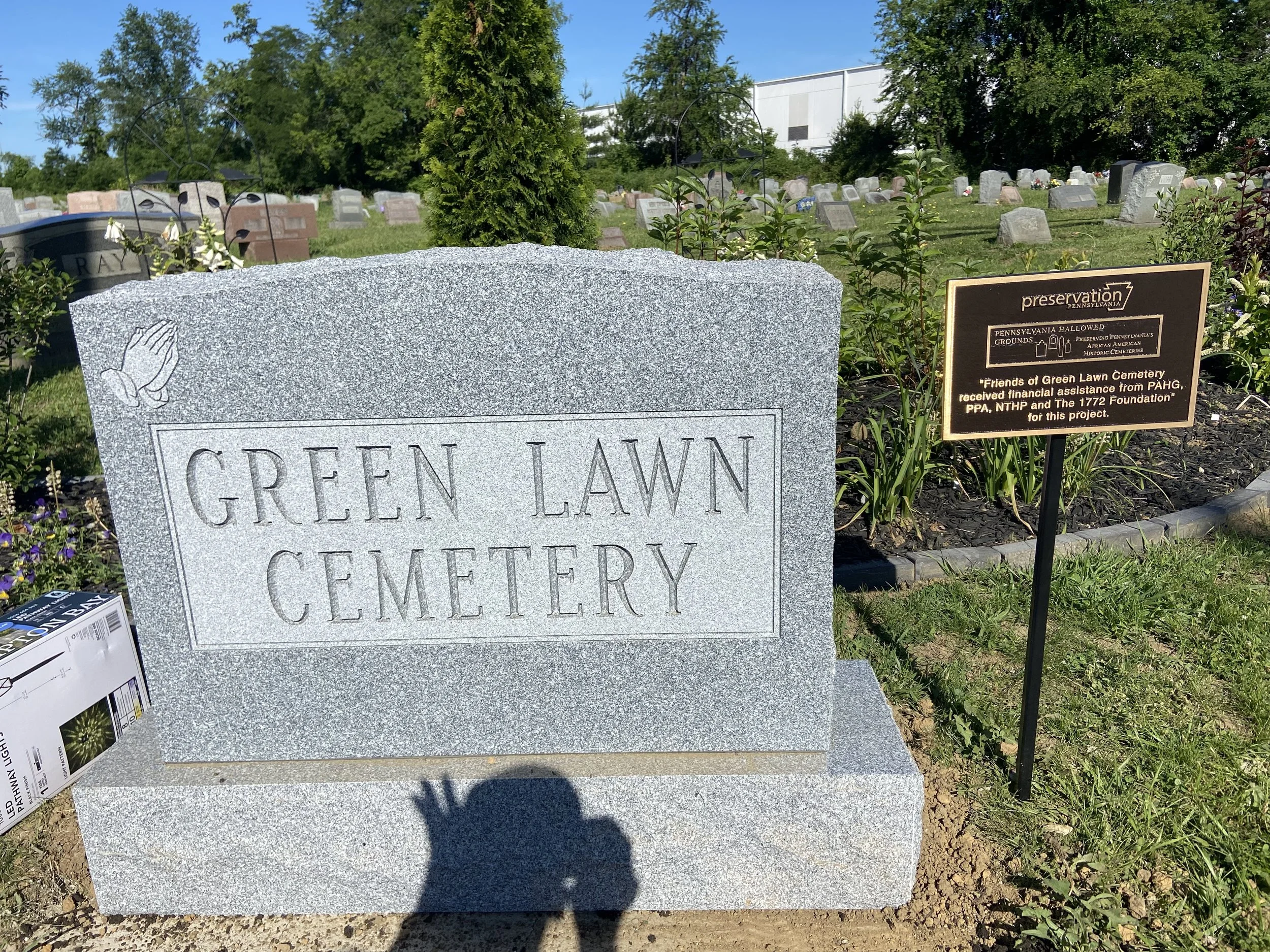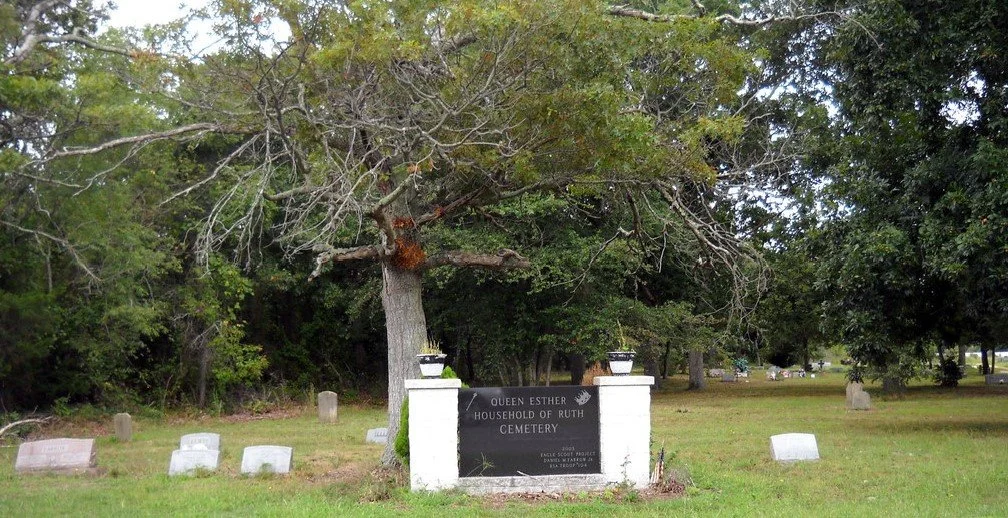SITE DIRECTORY
To learn more about any of the BCN sites listed below, click “Read more” to view individual site briefs. To search for a specific BCN site, use the search bar below:
Snow Hill Primitive Baptist Cemetery
SNOW HILL PRIMITIVE BAPTIST CEMETERY
FOUNDED: 1929
ADDITONAL NAMES: None
AFFILIATION(S): Previously affiliated with Snow Hill Baptist Church
HISTORY: Snow Hill Cemetery, located in Mebane North Carolina, has been burial ground to many in the now Miles Chapel area formerly known as Unity in Alamance County. Families from the Moore, Hightower, Miles, Lea and others were buried there. This cemetery is a burial ground for early teacher Eliza Lea, who taught at Pleasant Grove Union, and Turner Moore, who helped found what’s now known as Miles Chapel church.
BCN Contact Information:
Melissa Enoch
msmelissae45@gmail.com
Plot N of Rosemary Cemetery
PLOT N OF ROSEMARY CEMETERY
FOUNDED: 1931
ADDITONAL NAMES: N/A
AFFILIATION(S): N/A
HISTORY:
In the early 1920s, Mr. Creighton donated a parcel of land to Collier County for the establishment of the county's second cemetery, named Rosemary Cemetery. Reflecting the social norms of the time, segregation extended even to burial grounds. African Americans were interred along the railroad tracks at what is now the intersection of Pine Ridge Road and Goodlette-Frank Road.
Today, there are no headstones or markers to remind the community of their presence—just a few pillars and overgrown weeds. While it is possible that wooden structures, such as crosses, were once placed to mark the graves, they have since deteriorated. It is estimated that there are eight bodies buried there, likely seven adults and one child.
Efforts are being made to honor this plot of land by establishing plans to install headstones, a botanical garden-style fence, and a historical marker. On January 28, 2025, as part of an Eagle Project, Jonathan Rodriguez presented to the Board of Collier Commissioners, requesting that they recognize the cemetery as historically significant to the community.
BCN Contact Information:
Amanda Townsend & Jonathan Rodriguez
amanda.townsend@colliercountyfl.gov
Hanna African-American Cemetery
HANNA AFRICAN-AMERICAN CEMETERY
FOUNDED: 1896
ADDITONAL NAMES: N/A
AFFILIATION(S): N/A
HISTORY:
Hugh Hanna, Sr. enslaved Black people on his properties, which included a plantation and a cattle farm. His 1825 tax return indicated that he owned 2,420 acres of land and enslaved 28 individuals. In 1896, E.S. Brown and M.R. Brown sold 113 acres to Samuel M. Cameron, an African American. This land included the Hannah and Cameron Cemeteries.
Preserving the Hanna African American Cemetery in Lake City, SC, is important for honoring local Black history and preventing the erasure of the lives and stories of those buried there. As a resting place for formerly enslaved individuals and their descendants, the cemetery holds significant cultural, historical, and genealogical value. Restoring the site would help preserve community heritage, support education, and recognize the contributions of African Americans in the region.
BCN Contact Information:
Dr. Terrie Gaskins-Bryant
bryant107@frontier.com
Green Lawn Cemetery
GREEN LAWN CEMETERY
FOUNDED: 1907
ADDITONAL NAMES: N/A
AFFILIATION(S): N/A
HISTORY:
Green Lawn Cemetery was founded by a former enslaved person, Lawrence Murray, Sr., in May 1907 to serve the African American community in the City of Chester, Delaware County, Pennsylvania. African Americans were not allowed to be buried within the Chester City limits. The 8.5-acre cemetery houses approximately 2,000 burials, including the graves of at least 300 veterans of the United States Armed Services who served from the Civil War through the 20th century. Green Lawn is a vital cultural and historical resource in the community, where residents can connect and learn about African American history and life, as well as the significant contributions African Americans have made to the Chester area, the Commonwealth of Pennsylvania, and the nation.
BCN Contact Information:
Dr. Clarence "AL" Grasty
Queen Esther Household of Ruth Cemetery
QUEEN ESTHER HOUSEHOLD OF RUTH CEMETERY
FOUNDED: around 1917
ADDITONAL NAMES: N/A
AFFILIATION(S): N/A
HISTORY:
The Queen Esther Household of Ruth Cemetery was established by Black women in the community of Whitesboro. This town was intentionally created by George Henry White and other dedicated African Americans as a safe haven for Black people seeking to escape the regional racism of the Deep South and the local racism present in Cape May County. Furthermore, the Household of Ruth Cemetery serves as a testament to the ingenuity and resilience of Black women, who were its founders.
BCN Contact Information:
Rev. Douglas Moore, MDiv, Pastor, First Baptist Church of Whitesboro
rev.dh.moore@gmail.co
Morningstar Tabernacle No. 88 Moses Cemetery and Hall
MORNINGSTAR TABERNACLE NO. 88 CEMETERY AND HALL
FOUNDED: 1885
ADDITONAL NAMES: Morningstar Moses Cemetery; Moses Hall Cemetery; No. 10 Cemetery; Gibson Grove
AFFILIATION(S): N/A
HISTORY:
Morningstar Moses Cemetery and Hall, founded in 1885 in Cabin John, Montgomery County, Maryland, is a significant African American historic site established by Morningstar Tabernacle No. 88 of the Ancient United Order of Sons & Daughters, Brothers & Sisters of Moses (MT88), Its early extant minutes book is a rare artifact. It shows how MT88 supported education, burial, and aid for its Black community. The 124 documented burials, including Clara Barton’s housekeeper Emma Jones and founding community member Sarah Gibson, date from 1894 to 1977, with 433 potential burials identified by GPR surveys. MT88 built a Moses Hall on the site for its meetings and community events. The site and local Black community were impacted by the construction of the Capital Beltway (I-495) in the 1960s. The Hall’s foundations remain the only remains of the three Moses Halls originally established in the county. Eligible for the National Register of Historic Places, it stands as a testament to Black resilience, community, and history.
BCN Contact Information:
Friends of Moses Hall, Inc.
morningstarmosescj@gmail.com
Island Pond Two
ISLAND POND TWO CEMETERY
FOUNDED: UNKNOWN
ADDITONAL NAMES: N/A
AFFILIATION(S): N/A
HISTORY:
Property Alt Key: 2582529. The land where this cemetery is located was part of an original land grant from 1884 belonging to Burrell Reese. Burrell and his family were enslaved in the Apopka area before the Civil War. Burrell's land was adjacent to his son-in-law, Jackson Knight's land. Both Burrell and Jackson have cemeteries located in the southwest corners of their original land grants. According to some death certificates, the cemetery on Jackson's land was named Island Pond Cemetery. In 2009 when Margaret Reese-Williams began searching for her family history and located both cemeteries, she registered them on the Florida Master Site File. She heard that Island Pond One was no longer used when it became full. That is when more burials occurred at the other site. Margaret gave the official name of Island Pond 2 to the cemetery on Burrell Reese's land. Property records show that the Island Pond 2 site, which is 5 acres, was owned in the 1940s by the Sorrento Burial Society. Today it is held by a private landowner who has applied for a family lot split so that homes may be built on the two plots. This site has had grave markers removed over the years and heavy equipment was brought on to do clearing as recently as 2023. The current property owner is not cooperating with efforts to preserve and protect the cemetery.
BCN Contact Information:
Katherine de Jongh & Margaret Reese-Williams
ELMWMP@COMCAST.NET
Island Pond One
ISLAND POND ONE CEMETERY
FOUNDED: early 1880s
ADDITONAL NAMES: N/A
AFFILIATION(S): N/A
HISTORY:
Island Pond One was formed out of land owned by Jackson Knight, through the Homestead Act. Jack or Jackson Knight, along with a group of former slaves from the William Shelton Delk "plantation" from Apopka, Florida settled in this area after the end of the Civil War. They named this area Island Pond. Property records show two cemeteries and a church, the Island Pond Primitive Baptist Church, existed on adjacent parcels. Over time the lands were sold off piece by piece. These early residents contributed significantly to the creation of and the economy of nearby communities of Mount Dora, Sorrento, and Eustis. In 2009, two women from Fort Pierce came to Lake County, Florida, researching their family history. Their persistence paid off and they registered two cemeteries on the Florida Master Site File, Island Pond One and Island Pond Two. In 2023 a nonprofit was formed to aid in the research, restoration, and preservation of the two cemeteries. In January of 2024, a committee working on behalf of the Division of Historical Resources selected our grant application for funding from the Abandoned African American Cemeteries Grant Program. We are awaiting the legislature's approval for the requested funding for the project.
BCN Contact Information:
Katherine de Jongh
katherine.dejongh@aol.com
Big zion Cemetery
BIG ZION CEMETERY
FOUNDED: 1863
ADDITONAL NAMES: N/A
AFFILIATION(S): N/A
HISTORY:
Big Zion AME Zion Church was founded in 1863 by Solomon Johnson. While he was enslaved, he asked his enslaver permission to build a "brush-harber" on the plantation. He granted Solomon Johnson the site as a permanent meeting place for worshipping and assigned a space as a burial ground for his slaves in 1863, documented records attest to the donation are located in the Tangipahoa Parish Clerk's Office is dated 1871. An additional two acres of land was donated to the church for a cemetery by William Woods to Solomon Johnson. Solomon Johnson is buried in Big Zion Cemetery; along with other men and woman who served in the military, educators, farmers, and church members.
BCN Contact Information:
Antoinette Harrell
afrigenah@yahoo.com
San Marcos Blanco Cemetery
SAN MARCOS BLANCO CEMETERY
FOUNDED: 1893
ADDITONAL NAMES: SMBC, San Marcos Community Cemetery
AFFILIATION(S):
———
————-
HISTORY:
Extensive research was conducted by the late Ms. Ollie Giles. The San Marcos-Blanco Cemetery was established in 1893 by five African American men. Wyatt Newman, James Landon, Henry Richardson, Lucky McQueen, and Miles Bowen purchased the 10.62 acres for $200 cash.
Officially, the cemetery became the San Marcos-Blanco Association Cemetery in 1901. In 1981, several local residents reorganized a cemetery association and had the name changed to San Marcos Community Cemetery. Some years later it was changed back to San Marcos-Blanco.
Today there are more than 400 graves with headstones and inscriptions. Many others do not have headstones, and Giles says there are probably still more that are unmarked and undiscovered. The cemetery is located on Post Road north of San Marcos. Initiatives will be focused on the maintenance and preservation of the site. It is presently being encroached upon by local expansion efforts. Vandalism and unauthorized entries onto the grounds contribute to our concerns.
BCN Contact Information:
Johnnie Bratton, Jr
Brainerd Cemetery
BRAINERD CEMETERY
FOUNDED: 1734
ADDITONAL NAMES: N/A
AFFILIATION(S): N/A
HISTORY:
Brainerd Cemetery is one of two cemeteries operated by the First Presbyterian Church of Cranbury. According to our records, the earliest burial occurred in the "Old Yard" in 1738. From information gleaned from church maps, records and longtime members, we know that behind the "Old Yard" was an area that had been designated both as the "Colored Section" and the "Potters' Field." The earliest burial in the segregated section was that of Edward Ditmars in 1846 (born 1784), and the most recent burial was 2010. We also know that there were at least two formerly enslaved women buried in the cemetery-- Gracie Allen & "Aunt Jennie." Our church's records note that Gracie Allen (1790 - 1875) "Freed Slave of Bayles Family." While her name is in our records, we have not been able to find her headstone. It is possible that she was originally given a simple wooden marker that has succumbed to elements or that a stone one was broken.
BCN Contact Information:
Sarah Mayer, lead researcher
cranbury252@cranburypres.org
Loving Care Cemetery
LOVING CARE CEMETERY
FOUNDED: Unknown
ADDITONAL NAMES: Mount Zion Cemetery
AFFILIATION(S): N/A
HISTORY:
In the 1950’s, our parents purchased a 5-acre tract of farmland that contained a small cemetery. Eventually, our parents decided to reopen the cemetery, renaming it Loving Care Cemetery in the late 1960’s, to allow burials, as it had been one of two cemeteries (Mayberry is the other) that families living in the Seffner, Thonotosassa communities had utilized as a final resting place for their loved ones.
The oldest residents recall seeing a headstone but over time the many of the headstones and two obelisks has disappeared. The oldest headstone we have currently is for Mr. Sampson Forrester, born March 1, 1786, and passed away on November 29, 1888. With the passage of time, many of the headstones have deteriorated and some of the grave spaces cannot be identified. There are approximately 60+ people buried in Loving Care, and the owners of the cemetery frequently get requests from family members of the deceased to be buried with their loved ones.
BCN Contact Information:
Ida Booth
Idabooth@gmail.com
African-American Ancestral Burial Ground at Vale Cemetery
AFRICAN-AMERICAN ANCESTRAL BURIAL GROUND AT VALE CEMETERY
FOUNDED: 1863
ADDITONAL NAMES: Vale Cemetery
AFFILIATION(S): N/A
HISTORY:
The African-American Ancestral Burial Ground at Vale Cemetery is the final resting place of abolitionists, Underground Railroad activists, advocates for African-American freedom, former slaves, war heroes, and people who were the fiber of Schenectady’s African-American community that began in the late 17th century. Vale Cemetery was established in 1857. Beginning in 1863, the African-American burial ground—formerly called the Colored Plot—was moved from Veeder Avenue to the present location. Vale Cemetery is listed as a National Park Service Underground Railroad Network to Freedom Site.
Notable members of the African-American community include: Moses Viney (1817-1909), a fugitive slave from Easton, Maryland who traveled the Underground Railroad to New York in 1840. While living in Schenectady, Viney was employed by Eliphalet Nott, President of Union College, and later he established a livery business and became a respected businessman. R.P.G. Wright (1772-1847) was an advocate for the education of African-Americans and president of anti-slavery conventions in the 1840s. Corporal Jared Jackson (1840-1888) served with Company N of the 20th Regiment of Colored Troops in the Union Army during the Civil War. The Vale community hosts an annual Juneteenth celebration at the African-American Burial Ground to honor the day the last slaves were freed by the Emancipation Proclamation, June 19th, 1865. The program includes a reenactment of Moses Viney’s escape from slavery.
BCN Contact Information:
Vale Cemetery Preservation, Inc.
vale@valecemetery.org
African Burial Ground at Historic St. Agnes Cemetery
AFRICAN BURIAL GROUND AT HISTORIC ST. AGNES CEMETERY
FOUNDED: 1867
ADDITONAL NAMES: N/A
AFFILIATION(S): N/A
HISTORY:
The African Burial Ground at Historic St. Agnes Cemetery is the final resting place of 14 former enslaved people—6 women, 1 man, 2 children, and 5 infants. St. Agnes Cemetery was established in 1867 and was listed on the National Register of Historic Places in 2008. In 2005, 13 human remains were disturbed in an undocumented burial ground during a construction project in Colonie, New York. The remains were placed in the care of the New York State Museum, along with one other individual whose remains were found during a construction project in 1998. Historical and bioarchaeological studies identified the unmarked burial ground as a place once used by individuals enslaved by the prominent colonial Schuyler family, and the analysis determined that most of the individuals were of African ancestry, with one woman of mixed Native American and African ancestry. The burials date to the 1700s to the early 1800s. The area of the former Schuyler estate is known today as Schuyler Flatts and is located along the Hudson River about 5 miles north of Albany, New York. The Schuyler Flatts Burial Ground Project Committee worked with archaeologists, artists, woodworkers, and historians, creating individually decorated burial containers and a reburial ceremony to honor these individuals. In 2015, St. Agnes Cemetery donated this burial site and the Town of Colonie funded the tombstone and marker. The day before the ceremony, the burial containers with the remains laid in state at the Schuyler Mansion, a state historic site once inhabited by relatives of the estate operators. On June 18, 2016, an interdenominational memorial ceremony honored the individuals as their remains were laid to rest with dignity and respect. On June 17, 2017, a bronze plaque was dedicated to mark the Historic African Burial Ground site at Historic St. Agnes Cemetery. The original African Burial Ground site at nearby Schuyler Flatts has a historical marker describing the discovering of the remains and the reburial project.
BCN Contact Information:
Historic St. Agnes Cemetery
Info@ADCemeteries.org
https://www.albany.org/listing/historic-st-agnes-cemetery/1806/
Buena Vista Plantation Cemetery
BUENA VISTA PLANTATION CEMETERY
FOUNDED: Early 1820s
ADDITONAL NAMES: N/A
AFFILIATION(S): N/A
HISTORY:
In 2019, archaeologists located an unmarked cemetery on the west bank of the Mississippi River, in upper St. James Parish, Louisiana, near the small Black community of Welcome. This location was formerly part of an antebellum sugar plantation known as Buena Vista, or Winchester, Plantation. The archaeologists did not excavate any of the burials in the cemetery to try to determine what, or how many, people were buried there. The present research was conducted in an effort to answer those questions, without necessitating additional excavation. In-depth historical, cartographic, and genealogical information was used to determine, with a large degree of confidence, that the individuals buried in this unmarked cemetery were likely slaves, freedmen, and their descendants, who lived, labored, and died on the plantation from the early 1820s to well into the twentieth century. Many of the descendant families, including the Butlers, Ceasars, Fishers, Geasons, Harrises, Hogans, Lallas, and Martins, continue to reside in, or maintain ties to, this portion of St. James Parish.
BCN Contact Information:
Don Hunter
dghunterjr@gmail.com
Zion Hill CME Cemetery
ZION HILL CME CEMETERY
FOUNDED: Late 1870s
ADDITONAL NAMES: Zion Church Cemetery, Zion Hill Cemetery
AFFILIATION(S): N/A
HISTORY:
This cemetery is affiliated with the Zion Hill CME Church of Cordova, Tennessee. The church and cemetery have both been serving the historically Black community of Bridgewater for over a century.
BCN Contact Information:
Reverend Gentry
zionhillcme@gmail.com
Oak Grove Colored Cemetery
OAK GROVE COLORED CEMETERY
FOUNDED: 1921
ADDITONAL NAMES: William P. Johnston Memorial Cemetery, Graham Colored Cemetery, Johnston Cemetery
AFFILIATION(S): N/A
HISTORY:
The Oak Grove Colored Cemetery is located on the US 380 Bypass and Texas 16 in Graham, Texas. The land for the cemetery was donated by Addie Graham on May 7, 1921. It was deed by Addie Graham for the specific purpose of burying colored people. It was known to be the colored section of Oak Grove Cemetery ( a public cemetery owned by the city of Graham) within the city of Graham, Texas. The first known burial was in 1929. The most recent and the last burial was 1971. The name of the cemetery was unofficially changed to separate it from the predominately white cemetery.
In July 2023, Rev. Vanessa A. Sims, began looking for her sister's grave. During her search for her sister, she found the cemetery to be overgrown, city and county officials denied ownership of cemetery land, no survey existed, a drainage easement had been placed on cemetery grounds, cemetery land had been taken to install 3 lanes of the US 380 bypass, a fence had been installed to shorten the cemetery, and sections of the cemetery had been sold to 2 private individuals. The African Americans buried in this sacred space had been devalued and neglected by city and county officials. The Texas Historic Commission has approved a Historic Marker/Medallion for the cemetery.
To protect and preserve the cemetery, community member, Rev. Vanessa A. Sims, applied for and was able to obtain a Texas Historic Cemetery designation from the Texas Historic Commission in May 2024.
Dr. Walter and the Texas Tech Archeology team will continue the archaeological investigation of the cemetery on October 12, 2024. In her July 2024 archaeology investigation report entitled "A Place Among the Saints" she writes "Extensive mapping efforts also indicates possible disturbances and encroachments that have negatively impacted the cemetery. Based on multiple oral accounts and a review of historic maps including the right of way map (discussed in an early section of this report), it is highly likely that the construction of Highway 380 and the associated drainage infringed upon the OGC-WPJ Cemetery. Most distressing about this realization, is the real possibility that burials are under the actual roadway."
BCN Contact Information:
Rev. Vanessa Sims
Pleasant Point Cemetery
PLEASANT POINT CEMETERY
FOUNDED: 1880s
ADDITIONAL NAMES: Woodlawn Cemetery
AFFILIATION(S): N/A
HISTORY:
Pleasant Point Cemetery, also known as Woodlawn, is located approximately 50 miles southwest of Jacksonville, Florida, on the west side of the St. Johns River, just outside Green Cove Springs. It lies off County Road 209 (30.16592 N, 81.699639 W). The cemetery covers an area of 1.4 acres.
Currently, 15 monuments are visible as restoration continues, with hopes of completion by Christmas 2025. When the project began in October 2024, only six individuals had been identified as being buried at Pleasant Point. Today, 40 individuals have been identified, with records available on Find a Grave.
Founded in the 1880s, the cemetery served the community of Magnolia, a free Black settlement. In the 1850s, Magnolia became a stronghold for Northern abolitionists and was later occupied by Union troops during the Civil War. After the war, the Magnolia Springs Hotel temporarily housed the Freedmen’s Bureau and an orphanage for Black children.
The land itself has a longer history: originally part of British Governor Patrick Tonyn’s 1,000-acre indigo plantation, it was granted to Thomas Travers in 1789 through a Spanish land grant.
Those laid to rest at Pleasant Point include members of the Forrester family, the first free Black family in Clay County, Florida, as well as Pizel Robinson and Mary Ambrose Robinson, great-grandparents of renowned entertainer Patti LaBelle. Civil War veteran George Forrester is interred there, along with three other veterans. Many others buried in the cemetery were prominent members of the community, including several Freemasons.
Pleasant Point Cemetery stands today as the last surviving link to a once-thriving community that endured the Civil War, Reconstruction, and decades of oppression.
BCN Contact Information:
Steve Griffith
ussgriffy@gmail.com
African Cemetery No. 2
AFRICAN CEMETERY NO. 2
FOUNDED: 1870
ADDITONAL NAMES: N/A
AFFILIATION(S): N/A
HISTORY:
This is the earliest recorded cemetery in Lexington to be organized, owned, and managed by African Americans. The 8-acre property was purchased in 1869 by Union Benevolent Society No. 2 (from which the cemetery gets its name) and the cemetery was chartered in 1870; burials continued until 1976. The people here were important leaders in Lexington. The cemetery uniquely honors individuals significant in the history of Thoroughbred Racing. Oliver Lewis, the first winner of the Kentucky Derby is buried here and it was the original burial site for the 3-time KY Derby-winning jockey Isaac Murphy. There over 150 members of the USCT including three individuals who were members of the 54th and 55th Massachusetts Regiments.
Like many private cemeteries African Cemetery No. 2 was not endowed and with the death of its founding members the cemetery became urban wasteland - it was declared abandoned on April 17, 1973. City government claimed ownership and surveyed graves in the cemetery in 1973 in anticipation of planned development; the revelation of over 5000 burial sites precluded that use. In March 1979, the Rev. H. Greene organized a nonprofit group as African Cemetery No. 2 Inc. to reclaim the landscape. The cemetery was cleaned and restored in 1980 and African Cemetery No. 2 Inc. was deeded the property in May 1981. The nonprofit was reorganized in 1995 and restoration, historic preservation, and cultural activities have continued since. The site was listed on the National Register of Historic Places in 2004. It is the home of Lexington’s longest running Juneteenth Celebration (since 2005).
BCN Contact Information:
Mark Coyne
mscoyn00@gmail.com
St. Mary Cemetery
ST. MARY CEMETERY
FOUNDED: 1855
ADDITONAL NAMES: N/A
AFFILIATION(S): N/A
HISTORY:
St. Mary Cemetery (established circa 1855), located in what was once a Texas Freedom Community bearing the same name in South Ellis County, Texas, is the burial place of those enslaved by General Edward H. Tarrant and their descendants. In addition to Tarrant graves, burials include the surnames: Graves, Hardeman, Hawkins, Herron, Hines, Myers, Payne, Rankin, Richardson, Sims, Standifer, Sweatt and Watson, formerly enslaved individuals and their descendants from nearby smaller plantations and farms whose descriptions can be found on both the Texas Slave Schedules of 1850 and 1860, and the United States Census in Ellis County, Texas, 1870 through 1940.
Willoughby Rankin can be traced to Stephen F. Austin's Old 300 Texas Colonists. He entered Texas from the state of Alabama as the property of Frederick Harrison Rankin. For 120 years, St. Mary Cemetery was the usual burial place for African Americans who lived in nearby communities in South Ellis County including, Italy, Avalon, and Forreston, Texas. The last burial (cremated) was interred in 2000.
BCN Contact Information:
Elmerine Allen Bell
elmerinebell@yahoo.com
